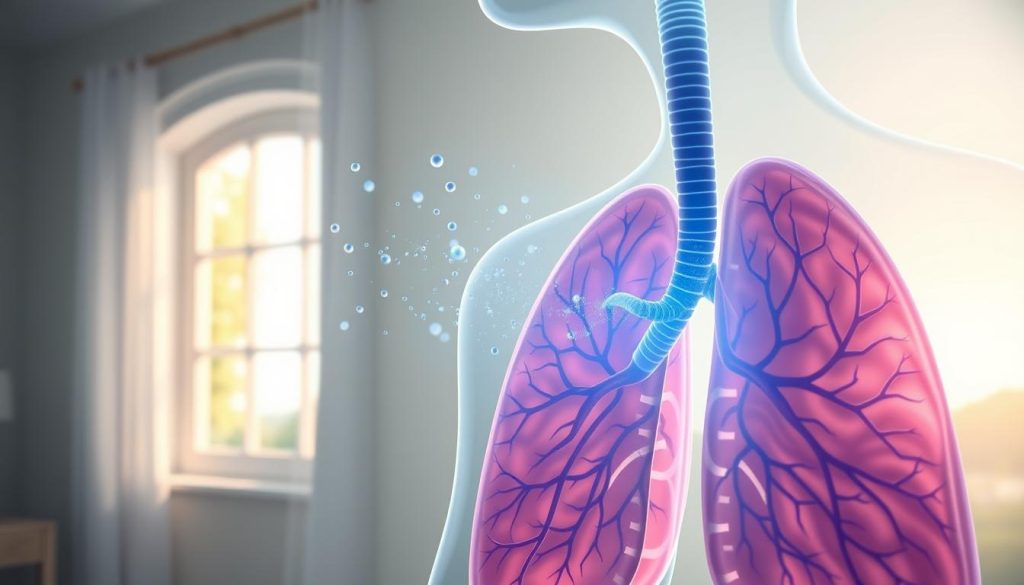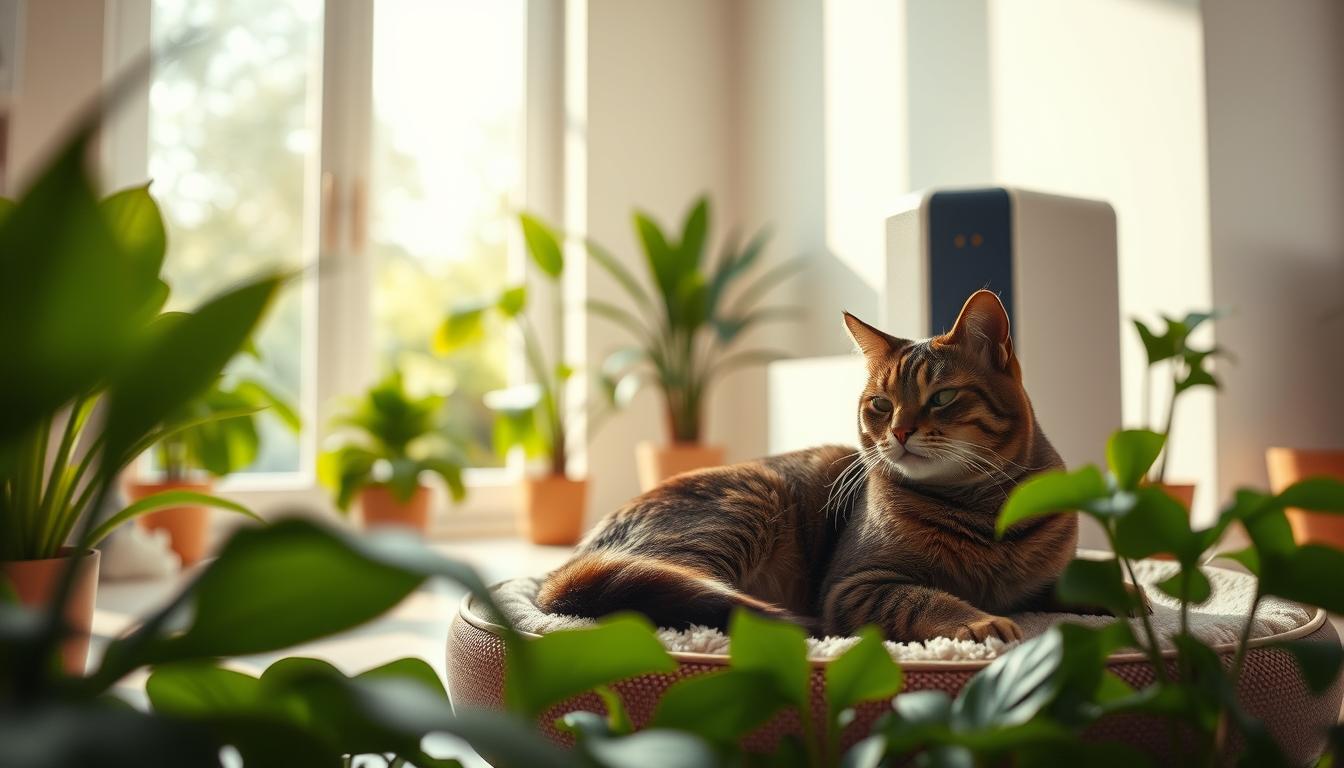As pet owners, we always strive to provide the best care for our furry friends, ensuring their health and well-being. In recent years, the concept of negative ions has gained popularity in the realm of human health, with many touting the benefits of ionized air and air purification. But have you ever wondered if these potential advantages could extend to our beloved pets as well?
The growing interest in ionic therapy for human health has led to curiosity about its applications in animal wellness. Could exposing our pets to negative ions positively impact their respiratory health, mental well-being, and overall quality of life? Let’s dive deeper into the world of negative ions and explore their potential benefits for our four-legged companions.
Understanding Negative Ions and Their Potential Benefits
In nature, negative ions are abundant in environments like waterfalls, forests, and beaches. These charged particles, also known as air ions, are created through various processes, including atmospheric electricity and the breakdown of water molecules. Negative ions have gained attention for their potential benefits to living organisms, making it essential to understand their properties and effects.
What Are Negative Ions?
Negative ions are molecules that have gained an extra electron, giving them a negative charge. They are formed when energy from sources like sunlight, radiation, or moving air and water breaks apart air molecules, resulting in the attachment of an electron to one of the fragments. This process creates negatively charged particles that circulate in the atmosphere.

The concentration of negative ions varies depending on the environment. Areas with higher levels of moisture, vegetation, and movement tend to have greater concentrations of negative ions. For example:
| Environment | Negative Ions per Cubic Centimeter |
|---|---|
| Waterfalls and Beaches | 10,000 – 100,000 |
| Mountains and Forests | 5,000 – 50,000 |
| Cities and Indoor Spaces | 100 – 1,000 |
How Negative Ions Affect Living Organisms
Research suggests that negative ions may have various effects on living organisms, including humans and animals. When negative ions are inhaled, they are believed to interact with the body’s cells and tissues, potentially influencing physiological processes. Some studies indicate that exposure to negative ions may improve mood, reduce stress, and enhance cognitive function.
Negative ions are also thought to impact the respiratory system positively. They may help to reduce airborne pollutants and allergens by causing them to clump together and settle out of the air, making them less likely to be inhaled. This effect could be particularly beneficial for individuals with allergies, asthma, or other respiratory sensitivities.
Furthermore, negative ions have been associated with increased bioavailability of certain nutrients and minerals. By facilitating the transport and absorption of these substances, negative ions may support overall health and well-being.
The Impact of Negative Ions on Human Health
Negative ions, found abundantly in nature, have been the subject of numerous studies exploring their potential health benefits. From improving respiratory function to enhancing mental well-being, these tiny particles may play a significant role in promoting overall wellness.
Negative Ions and Respiratory Health
Research suggests that negative ions can help alleviate symptoms associated with respiratory conditions such as asthma and allergies. By reducing airborne pollutants and allergens, negative ions create a cleaner, more breathable environment. Studies have shown that exposure to negative ions can:
- Decrease inflammation in the airways
- Reduce mucus production and congestion
- Improve lung function and capacity

Negative Ions and Mental Well-being
In addition to physical benefits, negative ions have been linked to improved mental health and cognitive function. Exposure to these particles has been associated with mood enhancement, stress reduction, and increased feelings of calmness and relaxation. Some findings indicate that negative ions can:
- Boost serotonin levels, a neurotransmitter that regulates mood
- Reduce symptoms of depression and seasonal affective disorder (SAD)
- Improve focus, concentration, and mental clarity
Negative Ions and Overall Wellness
Beyond respiratory and mental health, negative ions may contribute to overall wellness by supporting immune function and promoting a healthier environment. Studies suggest that negative ions can:
- Strengthen the body’s natural defenses against pathogens
- Neutralize free radicals and reduce oxidative stress
- Improve sleep quality and promote more restful slumber
While more research is needed to fully understand the mechanisms behind these effects, the growing body of evidence points to the potential of negative ions as a natural, non-invasive way to support human health and well-being.
Exploring the Effects of Negative Ions on Pets
As we’ve seen the potential benefits of negative ions for human health, it’s natural to wonder if our furry friends can also experience similar effects. While research on the impact of negative ions on pets is still limited, there is a growing interest in exploring how ionized air may influence the well-being of various animal species.
Recent animal studies have begun to shed light on the potential effects of negative ions on pets. These studies have focused on a range of species, from companion animals like dogs and cats to livestock and even aquatic life. The findings suggest that exposure to negative ions may have species-specific effects, highlighting the need for targeted veterinary research in this area.

One promising avenue of investigation is the use of negative ions in pet therapy. Just as negative ions have been shown to promote relaxation and reduce stress in humans, they may also have a calming effect on animals. This could be particularly beneficial for pets with anxiety or behavioral issues, as well as those recovering from illness or surgery.
Veterinary research is also exploring the potential applications of negative ions in animal healthcare settings. From improving air quality in veterinary clinics to enhancing the healing process for injured or sick animals, the possibilities are intriguing. However, more studies are needed to fully understand the mechanisms behind these effects and to develop safe and effective protocols for using negative ions in veterinary practice.
As we continue to uncover the ways in which negative ions can support the health and well-being of both humans and animals, it’s essential to approach this area of research with an open but critical mind. By collaborating across disciplines and sharing insights from animal studies, pet therapy, and veterinary research, we can work towards a better understanding of how negative ions can benefit our beloved companions.
Are Negative Ions Beneficial for Pets Too?
As we’ve explored the potential benefits of negative ions for human health, it’s natural to wonder if our furry companions can also reap the rewards of ionized air. While research on the effects of negative ions on pets is still limited, there are promising indications that these charged particles could support animal respiratory health, reduce pet allergies, ease anxiety in pets, and boost the pet immune system.
Potential Benefits of Negative Ions for Pets
Negative ions may offer several advantages for our four-legged friends:
- Alleviating pet allergies by reducing airborne allergens
- Promoting animal respiratory health by purifying the air
- Calming anxiety in pets by creating a soothing atmosphere
- Supporting the pet immune system by neutralizing harmful pollutants
Research and Studies on Negative Ions and Pet Health
Although studies on negative ions and pet health are scarce, some findings suggest potential benefits:
| Study | Findings |
|---|---|
| Effects of Negative Ions on Canine Respiratory Function | Exposure to negative ions improved breathing and reduced airway inflammation in dogs with respiratory issues. |
| Negative Ion Therapy for Feline Anxiety | Cats exposed to negative ion generators exhibited reduced stress levels and improved overall well-being. |
| Impact of Ionized Air on Pet Allergies | Negative ions significantly decreased the presence of pet dander and other allergens in the air, potentially benefiting both pets and their allergy-prone owners. |
While these studies provide encouraging insights, more research is needed to fully understand the extent of negative ions’ impact on pet health. As always, consult with your veterinarian before introducing any new therapies or environmental changes for your furry friend.
Ways to Increase Negative Ions in Your Pet’s Environment
As a pet owner, you may be wondering how to improve your furry friend’s home environment and overall well-being. One way to achieve this is by increasing the presence of negative ions in your pet’s surroundings. Negative ions have been shown to enhance indoor air quality and promote a sense of relaxation, making them beneficial for both humans and pets alike.
Natural Sources of Negative Ions
Nature provides an abundance of negative ions, and you can harness these natural sources to create a more refreshing and invigorating space for your pet. Some of the most effective ways to incorporate negative ions into your pet’s environment include:
- Placing indoor plants throughout your home
- Installing a water fountain or feature
- Opening windows to allow fresh air circulation
- Taking your pet on walks near waterfalls, beaches, or forests
By exposing your pet to these natural sources of negative ions, you can help them experience the benefits of nature therapy without leaving the comfort of your home.
Negative Ion Generators for Pet-Friendly Spaces
In addition to natural sources, you can also use negative ion generators to increase the concentration of negative ions in your pet’s environment. When choosing an ion generator, it’s crucial to select a pet-safe air purifier specifically designed for homes with animals.

Consider the following factors when selecting a negative ion generator for your pet-friendly space:
| Factor | Description |
|---|---|
| Size of the space | Choose a generator that can effectively cover the area where your pet spends the most time |
| Noise level | Opt for a quiet device that won’t disturb your pet’s rest or cause anxiety |
| Safety features | Ensure the generator has pet-safe features, such as an automatic shut-off or protective grills |
| Ease of maintenance | Select a generator with removable and washable filters for simple upkeep |
By incorporating both natural sources and pet-safe negative ion generators, you can create an environment that supports your pet’s well-being and enhances their overall quality of life.
Precautions and Considerations When Using Negative Ions for Pets
While negative ions may offer potential benefits for pets, it’s crucial to approach their use with caution and careful consideration. As a responsible pet owner, your top priority should always be ensuring the safety and well-being of your furry companion. Before making any significant changes to your pet’s environment, it’s essential to consult with a trusted veterinarian who can provide personalized guidance based on your pet’s unique needs and health status.
Consulting with Your Veterinarian
Your veterinarian is your best resource for veterinary advice when it comes to your pet’s health and wellness. They can help you determine whether increasing exposure to negative ions is appropriate for your pet, taking into account factors such as species, age, and any pre-existing health conditions. Your vet can also provide valuable insights on the most effective and safe ways to incorporate negative ions into your pet’s environment, ensuring optimal pet safety.
Monitoring Your Pet’s Response to Negative Ions
Every pet is unique, and their response to increased exposure to negative ions may vary. Some animals may show noticeable improvements in their overall well-being, while others may have little to no reaction. It’s crucial to closely monitor your pet’s behavior and health when introducing negative ions into their environment. Keep a watchful eye out for any signs of discomfort or adverse reactions, and be prepared to make adjustments as needed. Regular animal health monitoring can help you gauge the effectiveness of negative ions for your pet and ensure their continued well-being.
Remember, the key to successfully using negative ions for your pet is to approach the process with patience, flexibility, and a commitment to your pet’s safety. By working closely with your veterinarian, monitoring your pet’s individual response, and making informed decisions, you can create a nurturing environment that supports your pet’s optimal health and happiness.
Enhancing Your Pet’s Well-being with Negative Ions and Other Natural Methods
While negative ions may offer potential benefits for pets, it’s important to approach pet health and wellness from a holistic perspective. Natural pet health encompasses a wide range of strategies that work together to promote the overall well-being of our furry friends. By taking a balanced approach that considers various aspects of pet care, you can create an environment that supports your pet’s vitality and happiness.
In addition to exploring the use of negative ions, consider incorporating other natural methods into your pet’s care routine. Providing a nutritious diet that meets your pet’s specific needs is crucial for maintaining their health and energy levels. Regular exercise, both physical and mental, helps keep pets active and engaged, contributing to their overall wellness. Creating a stress-free environment and offering ample opportunities for rest and relaxation are also key components of holistic pet care.
Remember, every pet is unique, and what works for one may not work for another. It’s essential to observe your pet closely and make adjustments as needed. Consult with your veterinarian to develop a personalized wellness plan that takes into account your pet’s individual needs and health status. By combining the potential benefits of negative ions with a comprehensive approach to natural pet health, you can help your beloved companion thrive and enjoy a high quality of life.

